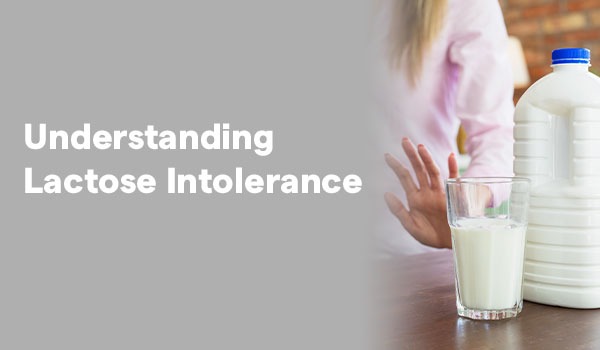
Even though lactose intolerance is common, there are a lot of myths about this condition. Hence, individuals must be aware of the symptoms, causes, and management of lactose intolerance.
A basic understanding of the lactose molecule and its metabolism helps comprehend this disorder. Lactose is also known as milk sugar since it is extracted from milk and can be found in other dairy products. Lactose is composed of two sugars: glucose and galactose. Lactose is also a milk-sweetening agent and acts as a source of energy and nutrients in growing children and adults.
Patients with lactose intolerance usually develop symptoms within half an hour to two hours after ingestion of dairy products or food containing lactose. The most common symptoms include:
The spectrum of these disorders varies from being minimally symptomatic to severely distressing symptoms and consequent malnutrition.
Lactose intolerance is a condition in which the body has a reduced or completely impaired capacity to digest lactose products. This occurs because of lactase deficiency, an enzyme secreted by the small intestine cells known as enterocytes. Lactase splits lactose into glucose and galactose and the two products are absorbed into the blood. In cases of low lactase production, lactose will not be broken down and will thus be fermented in the large intestine therefore producing gas and other symptoms of lactose intolerance.
Diagnosis of the condition, lactose intolerance, can be quite complex because its symptoms are like those of many other illnesses affecting the digestive system. Before any diagnosis, the doctor from the best liver gastroenterology hospital in Delhi looks at records concerning a patient’s past health and illness, and his/her complaints. If required a healthcare professional may advise the patient to take a hydrogen breath test or lactose tolerance test.
There is no cure for lactose intolerance, but there are several management strategies to minimize symptoms and maintain a balanced diet:
Lactose malabsorption/intolerance is a normal digestive problem that affects many people all over the world. Given the information about the level of lactose intolerance, it is vital that people who desire to adhere to a specific dietary plan can do so without suffering the effects of digestive issues that come with this condition. To treat this condition and for effective guidance, individuals must book an appointment at Sir Ganga Ram Hospital and start taking a lactose-free diet with guidance on nutritious foods that must be included in the diet today.